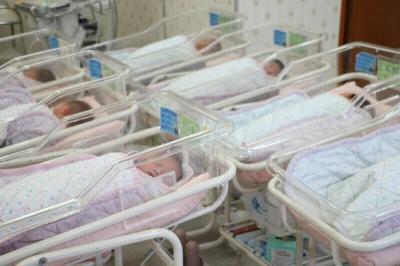Smokers may find the same brand of cigarettes selling for different prices when the new tobacco health and welfare surcharge is introduced, Department of Health (DOH) Bureau of Health Promotion Director-General Hsiao Mei-ling (蕭美玲) said yesterday.
“We will ask tobacco manufacturers to label their cigarettes accurately and clearly, so smokers will know how much surcharge they are paying,” Hsiao said. “However, it is unavoidable that during the transition period for the new surcharge, different prices for the same cigarettes will be seen.”
Hsiao made her remarks during a press conference at the DOH yesterday afternoon. She said the bureau would ensure that no tobacco manufacturers would earn additional profits by hoarding its current products, labeling them with the new surcharge and selling them at a higher price.
“Current products must be sold at current prices that include the surcharge. The new surcharge will be levied and labeled on the first day it becomes effective,” Hsiao said.
Hsiao said that the surcharge would be collected on cigarettes that are imported or manufactured on or after the day the charge is enacted. The legislature approved amendments to Article 4 and Article 35 of the Tobacco Hazards Prevention and Control Act (菸害防治法) on Jan. 11.
The tobacco health and welfare surcharge will be raised from NT$10 per pack of cigarettes to NT$20 per pack, but the DOH has yet to decide when the amendments and the new surcharge will be introduced.

An apartment building in New Taipei City’s Sanchong District (三重) collapsed last night after a nearby construction project earlier in the day allegedly caused it to tilt. Shortly after work began at 9am on an ongoing excavation of a construction site on Liuzhang Street (六張街), two neighboring apartment buildings tilted and cracked, leading to exterior tiles peeling off, city officials said. The fire department then dispatched personnel to help evacuate 22 residents from nine households. After the incident, the city government first filled the building at No. 190, which appeared to be more badly affected, with water to stabilize the

Taiwan plans to cull as many as 120,000 invasive green iguanas this year to curb the species’ impact on local farmers, the Ministry of Agriculture said. Chiu Kuo-hao (邱國皓), a section chief in the ministry’s Forestry and Nature Conservation Agency, on Sunday said that green iguanas have been recorded across southern Taiwan and as far north as Taichung. Although there is no reliable data on the species’ total population in the country, it has been estimated to be about 200,000, he said. Chiu said about 70,000 iguanas were culled last year, including about 45,000 in Pingtung County, 12,000 in Tainan, 9,900 in

DEEPER REVIEW: After receiving 19 hospital reports of suspected food poisoning, the Taipei Department of Health applied for an epidemiological investigation A buffet restaurant in Taipei’s Xinyi District (信義) is to be fined NT$3 million (US$91,233) after it remained opened despite an order to suspend operations following reports that 32 people had been treated for suspected food poisoning, the Taipei Department of Health said yesterday. The health department said it on Tuesday received reports from hospitals of people who had suspected food poisoning symptoms, including nausea, vomiting, stomach pain and diarrhea, after they ate at an INPARADISE (饗饗) branch in Breeze Xinyi on Sunday and Monday. As more than six people who ate at the restaurant sought medical treatment, the department ordered the

Taiwan’s population last year shrank further and births continued to decline to a yearly low, the Ministry of the Interior announced today. The ministry published the 2024 population demographics statistics, highlighting record lows in births and bringing attention to Taiwan’s aging population. The nation’s population last year stood at 23,400,220, a decrease of 20,222 individuals compared to 2023. Last year, there were 134,856 births, representing a crude birth rate of 5.76 per 1,000 people, a slight decline from 2023’s 135,571 births and 5.81 crude birth rate. This decrease of 715 births resulted in a new record low per the ministry’s data. Since 2016, which saw